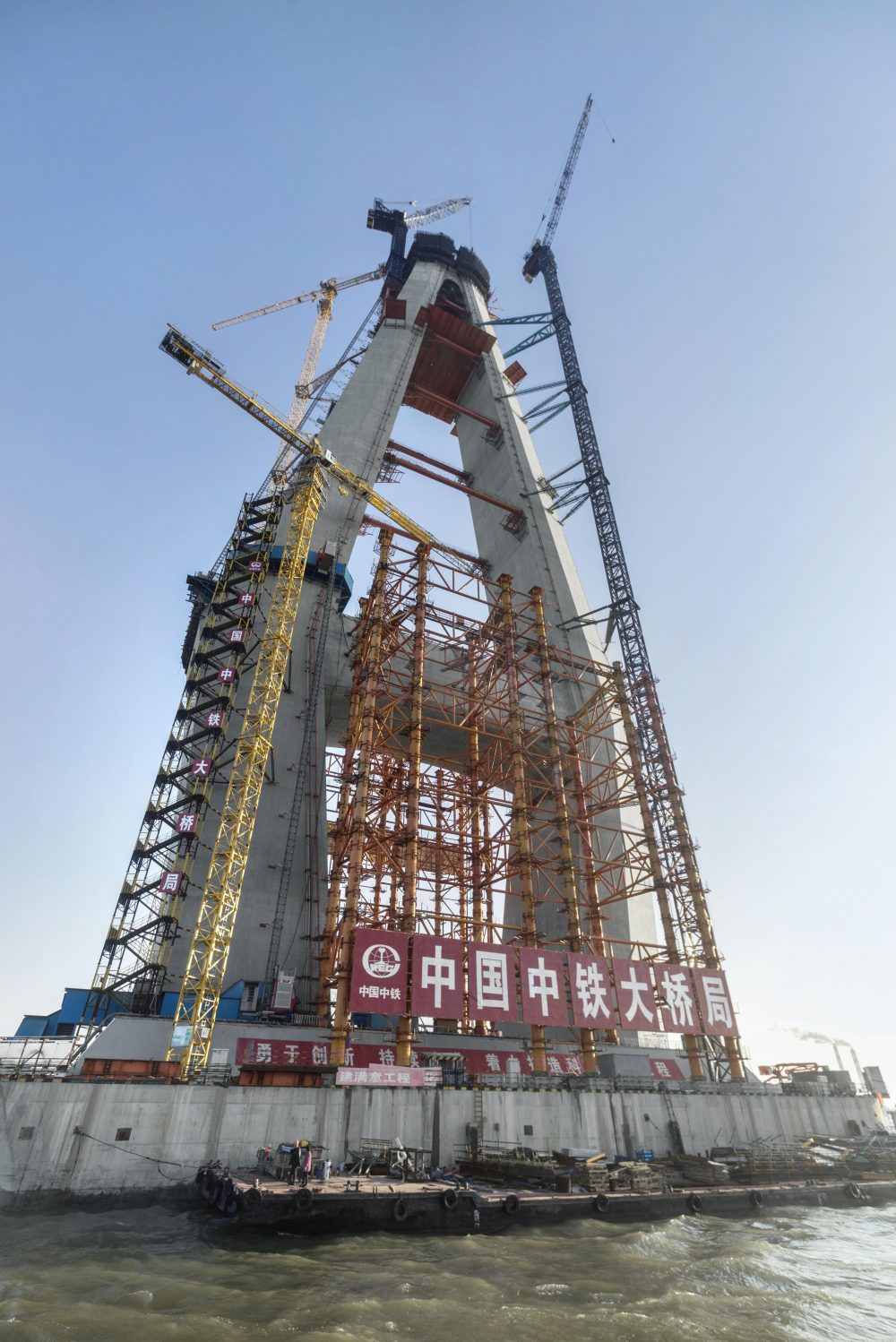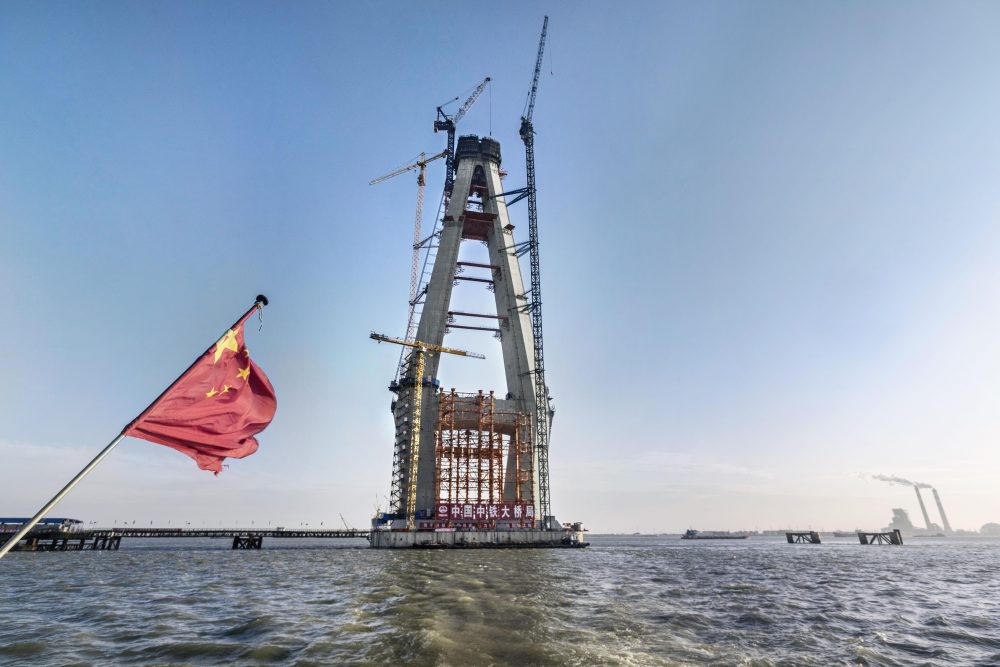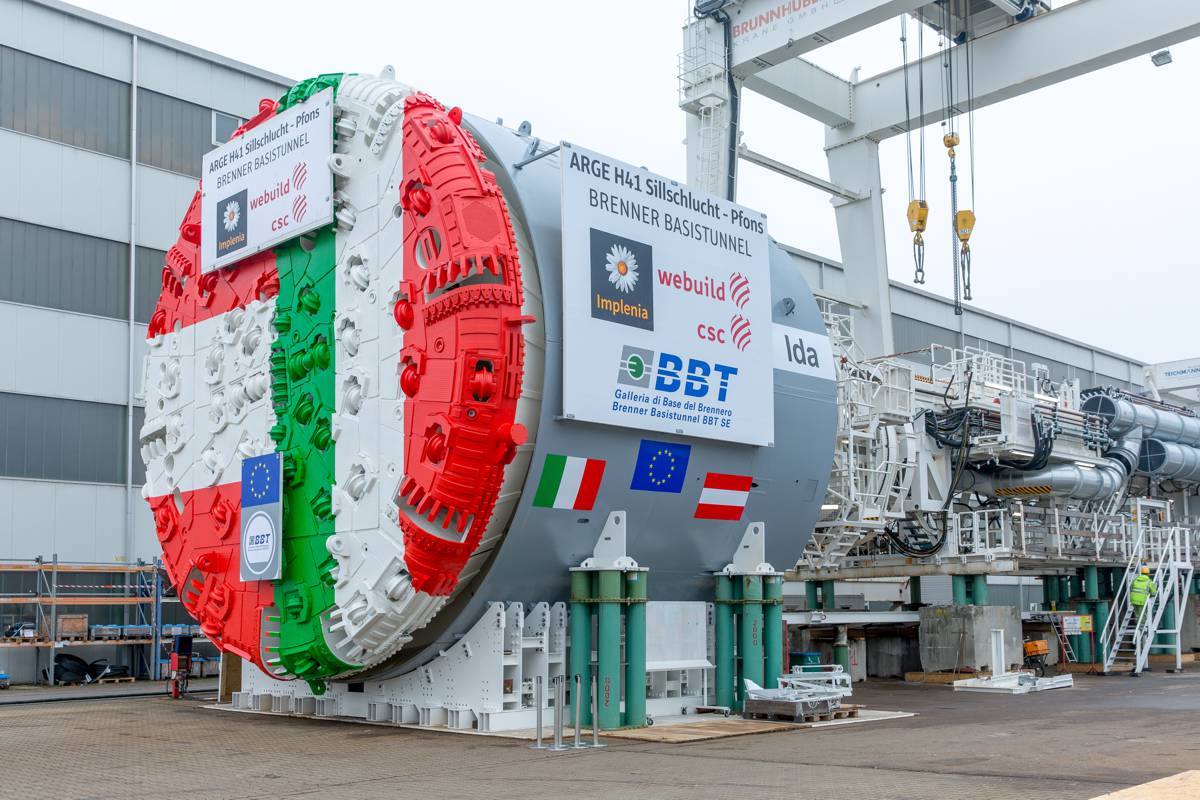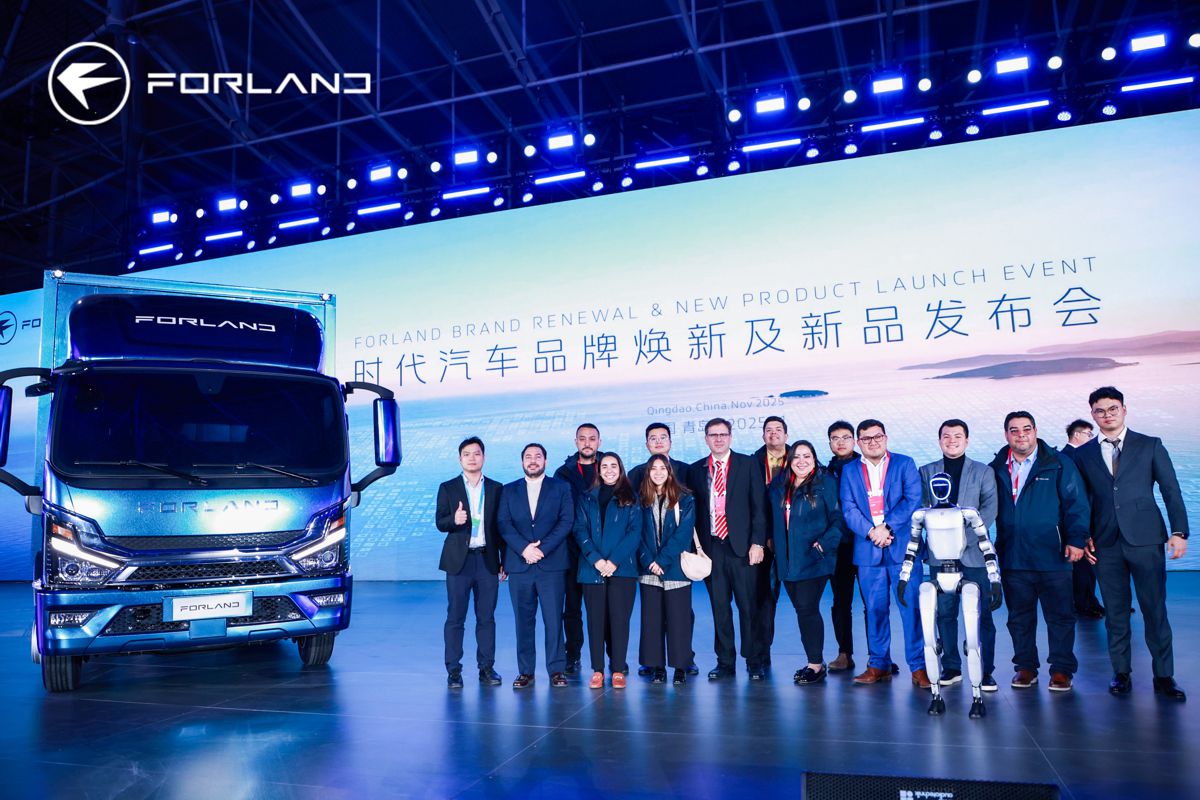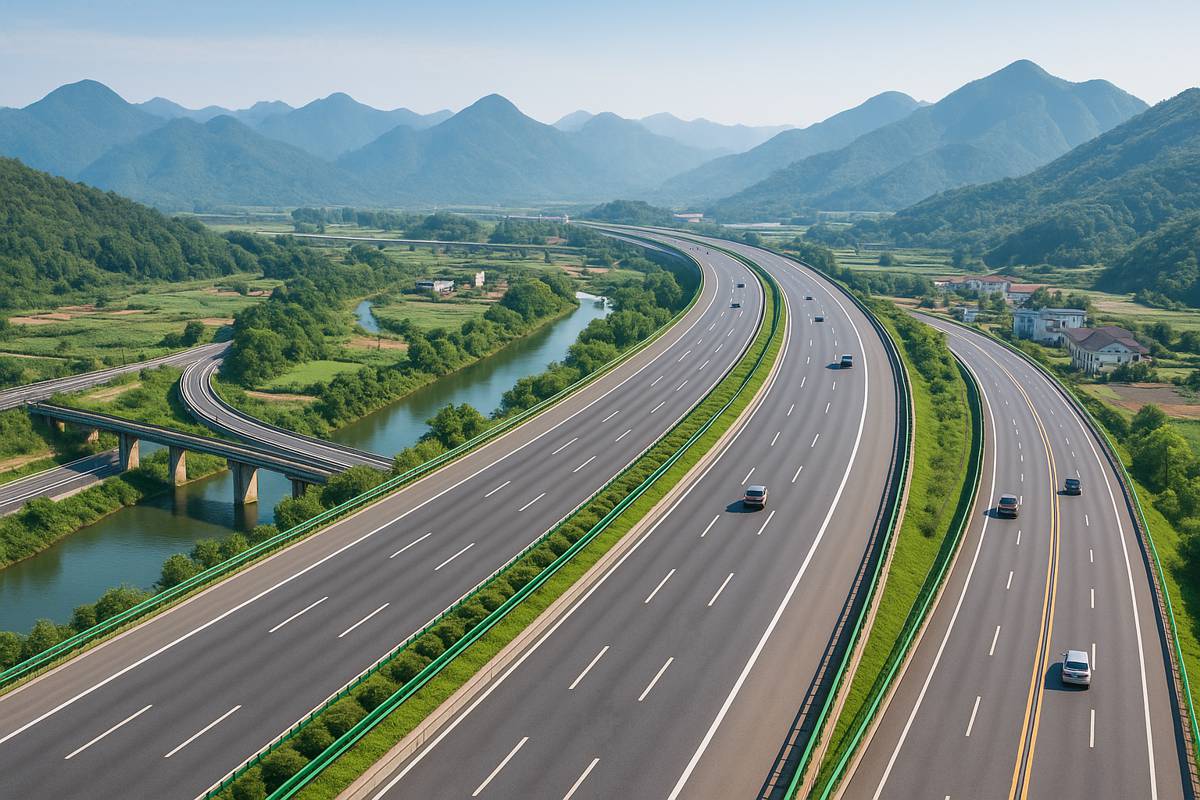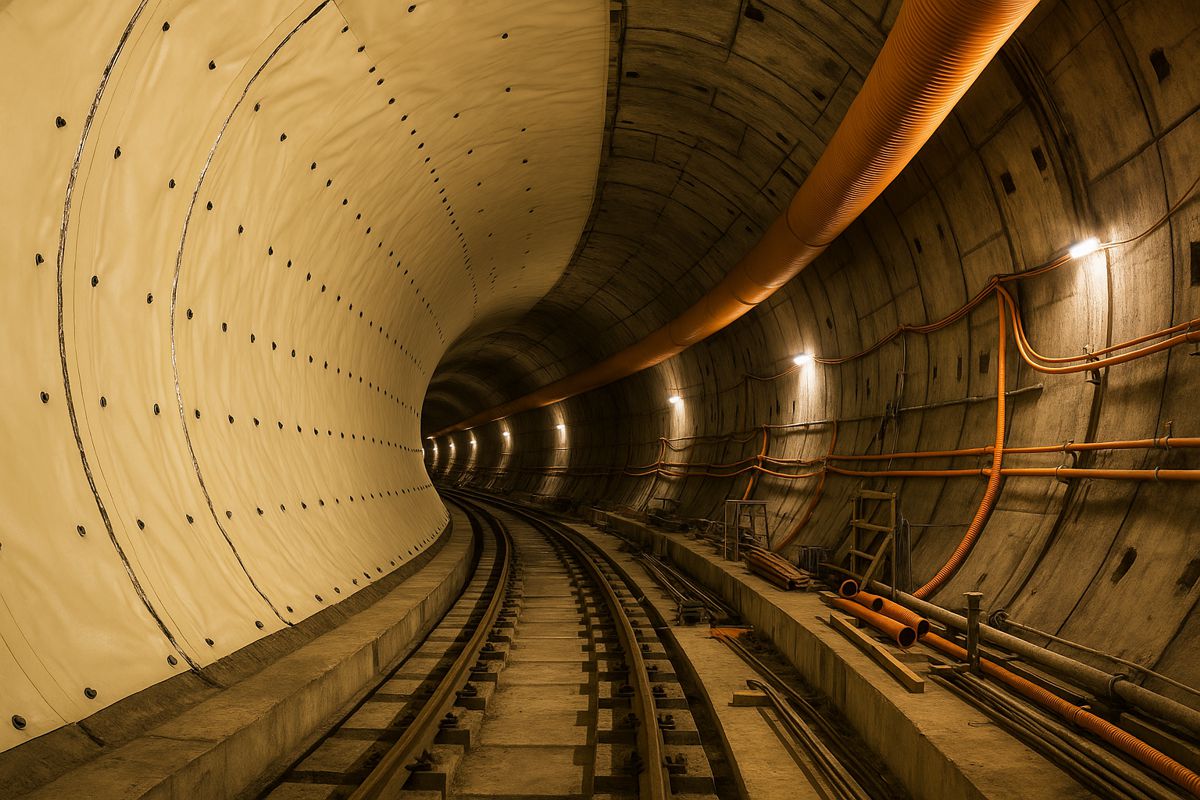China’s Shanghai-Nantong Yangtze River Bridge built using Doka automatic climbing formwork
In China’s Jiangsu Province, north of Shanghai, work is in progress on what will be the world’s biggest cable-stayed bridge, the Shanghai-Nantong Yangtze River Bridge. As well as the world’s longest span (1092 metres), it will also have the tallest pylons at 325 metres. Doka automatic climbing formwork SKE100 plus is being used in combination with Large-area formwork Top 50 to construct the pylons.
In China, bridges are often mega-size structures and some have already won international awards. Due for completion in 2019, the Shanghai-Nantong Yangtze River Bridge will take its place in the list of mega-bridges. With a total length of 11,072 metres, the bridge has two levels, with ´a six-lane highway on the upper level and a four-line railway on the lower. The new traffic link is part of the efforts to create a new economic zone around Shanghai, China’s trade centre and home to some 25 million people. When completed, the bridge will cut journey time between Shanghai and Nantong from two hours to one.
The south bridge is a cable-stayed structure with steel framework, spanning the main channel of the Yangtze River. The north bridge crosses the Tiansheng Port channel, it has a rigid steel girder structure and a flexible arch with a main span of 336 metres. Set to become the world’s biggest cable-stayed bridge, it will also be the longest steel railway bridge in the world. The steel arch weighs 32,400 metric tons, roughly the equivalent of three Eiffel Towers.
The pylons are being constructed in one of the biggest and deepest (115 metres) coffer dams ever built. The enclosed area is about the same size as 12 basketball courts. A little more than 147,000 m³ of concrete are needed for one pylon.
Smooth progress in a 5-day cycle
Difficult weather conditions (wind speeds up to 72 km/h), climbing in 55 pouring steps without major alterations to the working platforms and progressive re-use of the formwork sheets posed major challenges for Doka. “Height of more than 300 metres and poor, foggy weather conditions are the biggest challenge for this jobsite”, emphasizes Mr. Yuan Bo, Principal Engineer from China Railway Bridge Bureau. So the construction managers opted for Doka’s SKE100 plus automatic climbing formwork system, which is designed to ensure smooth progress on the build even when outdoor conditions are extreme.
With automatic climbing formwork SKE100 plus in use, adapting to the changing geometry of the pylon legs is easy. As well as meeting the highest safety standards, a single V140 hydraulic unit can climb all 30 automatic climbing units on each pylon foot at once. With a rated lifting capacity of 10 metric tons per climbing unit, the SKE100 plus system is eminently suitable for the pylon structure with its high ratio of reinforcing material.
The automatic climbing system is combined with Large-area formwork Top 50 to give the concrete its shape. The Top 50 formwork is mounted on travelling units on the platforms, so forming times are fast and the formwork can be opened and rolled well back for plenty of clearance. A total of 900 m² of the large-area formwork is being used. Changing form-ply can be an awkward job, so for this build the formwork was faced with Xlife sheets, which permit huge numbers of use cycles.









